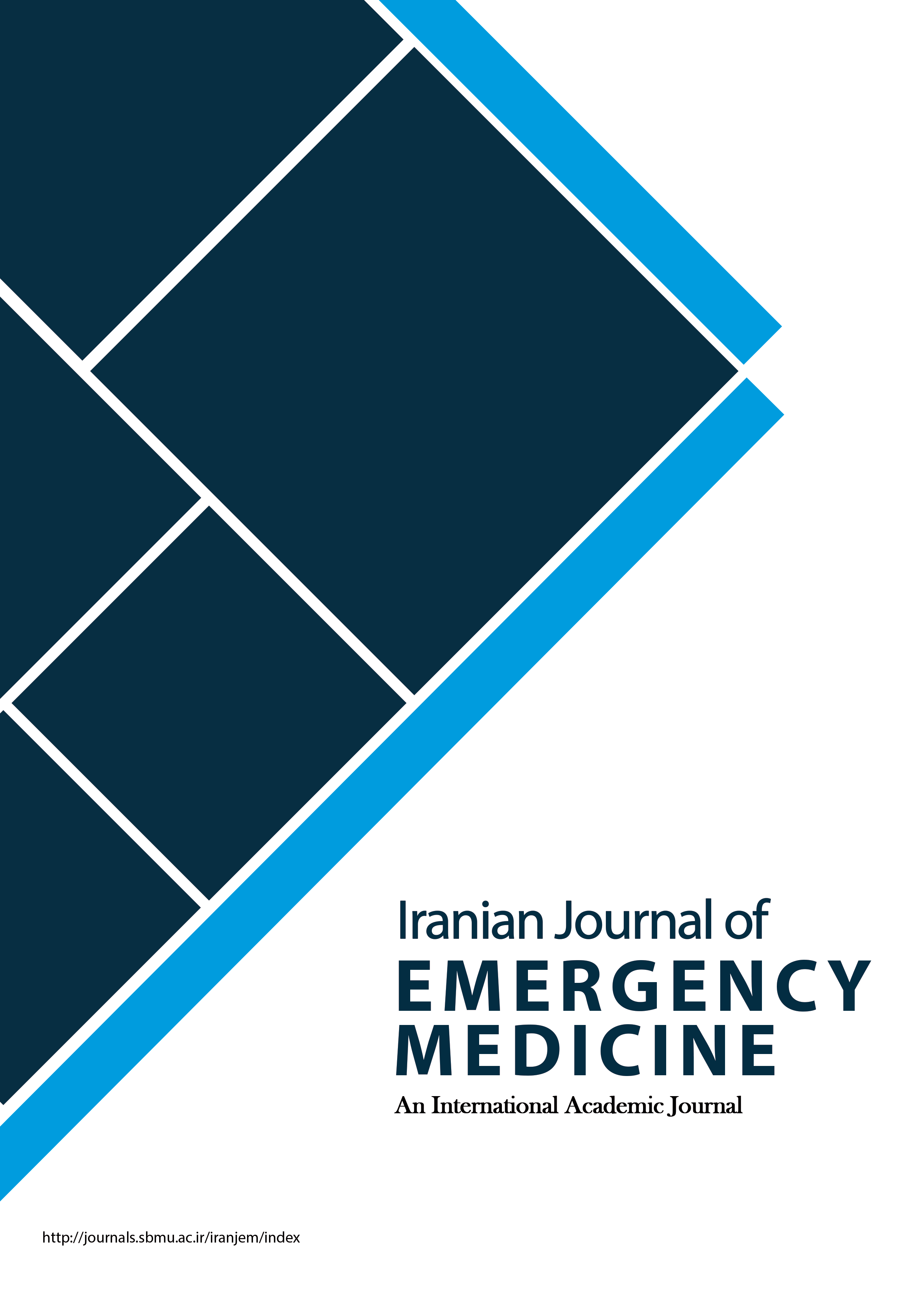The Reasons of Emergency Department Patients’ Dissatisfaction
Iranian Journal of Emergency Medicine,
Vol. 2 No. 2 (2015),
23 May 2015,
Page 59-63
https://doi.org/10.22037/ijem.v2i2.8370
Introduction: Evaluating the reasons of emergency patient dissatisfaction and trying to eliminate them is a step towards increasing the quality of care and profitability. Therefore, this study aimed to evaluate the reasons of patient dissatisfaction in the emergency department of Shohadaye Tajrish Hospital, Tehran, Iran. Methods: The present cross-sectional study was done in the time interval between March 2012 and October 2014. All the patients who had declared their dissatisfaction, whether written, verbal, or by phone, were included. Using a pre-designed checklist, data were gathered regarding characteristics of dissatisfaction including: type, reference, presentation, subject, and outcome and analyzed using SPSS version 21. Significance level was considered as p<0.05. Results: 123 cases of dissatisfaction were detected. In 31 (25.2%) cases the patient was right, in 41 (33.3%) the hospital was right and 51 (41.5%) cases had no outcome. The dissatisfactions were written in 23 (18.7%) cases, by phone in 17 (13.8%), and verbal in 83 (67.5%), which showed no significant correlation with the outcome (p=0.277). Only 31 (25.2%) cases were declared by the patients themselves which had no correlation with the outcome (p=0.747). However, there was a significant correlation between the type (p=0.025) and subject (p<0.001) of dissatisfaction with the outcome. Conclusion: The results of this study showed that most cases of dissatisfaction were assigned to the surgery group and nursing service. Low quality care and bad behavior of the staff were among the most common causes of patients’ dissatisfaction. In all cases of dissatisfaction regarding the neurosurgery service, internal medicine service, and admission unit, the patients have been right. In contrast, in all cases of triage and laboratory unit, the hospital has been right.




